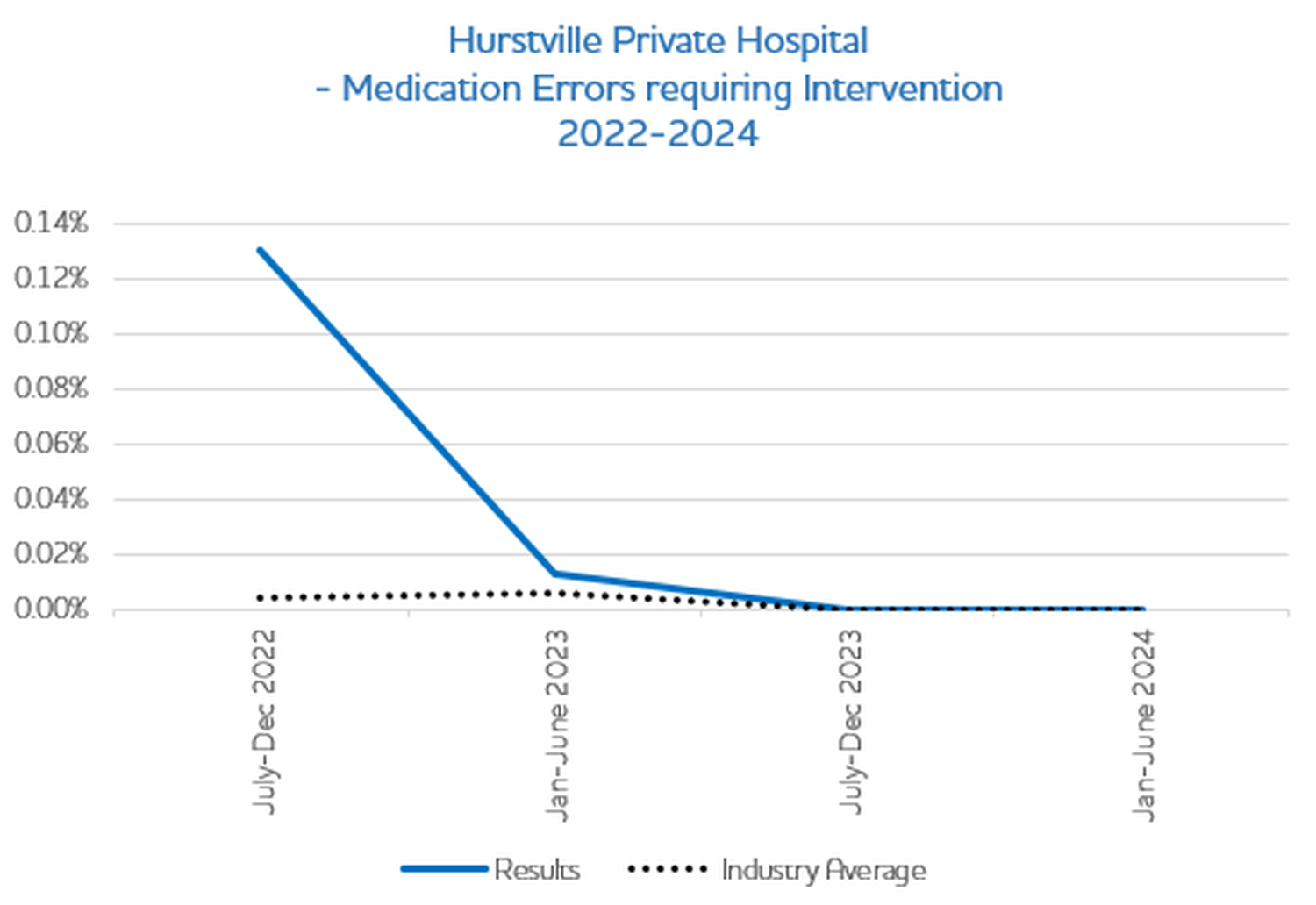Patient Outcomes
As part of our quality framework, we regularly measure and benchmark ourselves against a range of 'Clinical Indicators'.
In accordance with the National Safety and Quality Health Service Standard 2: Partnering with Consumers, the contents of this page have been reviewed by Healthe Care Consumer Advisory Committees.
![]()
Infection Rate (Staph Aureus Bacteraemia or SAB)
Hurstville Private Infection Rates
Germs can cause an infection known as Staphylococcus Aureus Bacteraemia (SAB) which needs antibiotic treatment if it enters the blood. Some serious strains are resistant to antibiotics.
Hurstville Private's rate of infection is well below the national average for hospitals. To reduce the risk of hospital acquired infections, we use best practice infection prevention and control with a focus on hand washing as this is the most effective way to stop germs spreading or entering the blood.
We provide continual education and training to all our caregivers to ensure we keep our infection rate well below the national target.
The graph below shows the number of patients that developed a hospital acquired Staphylococcus Aureus Bacteraemia (SAB) infection. The Hurstville Private rate is lower (better) than the industry benchmark. Hurstville Private has a number of risk mitigation strategies in place to reduce the risk of transmission of Health Care Associated Infections.
The most valuable prevention is for everyone to wash their hands, patients, visitors and health professionals alike.
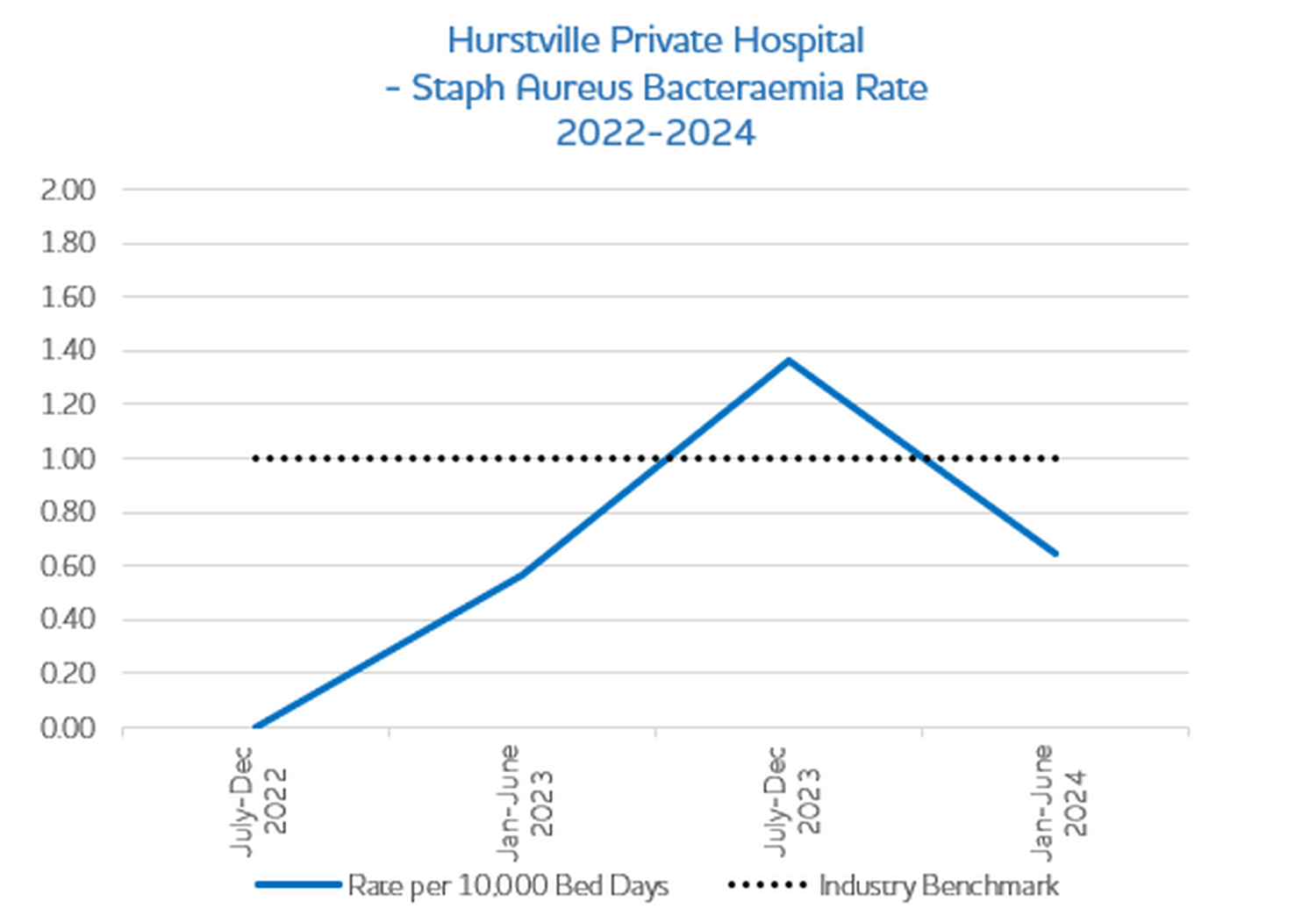
![]()
Hand Hygiene
Hurstville Private Hospital Hand Hygiene Compliance
Hand hygiene (or hand washing) is one of the best ways to stop infections so, as a priority, we educate and train all caregivers in the World Health Organisation’s (WHO) “five moments” for hand hygiene. We also audit our staff and provide our results to Hand Hygiene Australia (HHA) to compare us against other Hospitals.
Hurstville Private Hospital ranks higher than national targets for hand hygiene. Our auditors complete compliance audits on a regular basis and submit data three times a year and we participate in the national hand hygiene strategy to continually improve our rates.
The graph below shows our Hand Hygiene compliance rates are above (better) than the Industry benchmark.
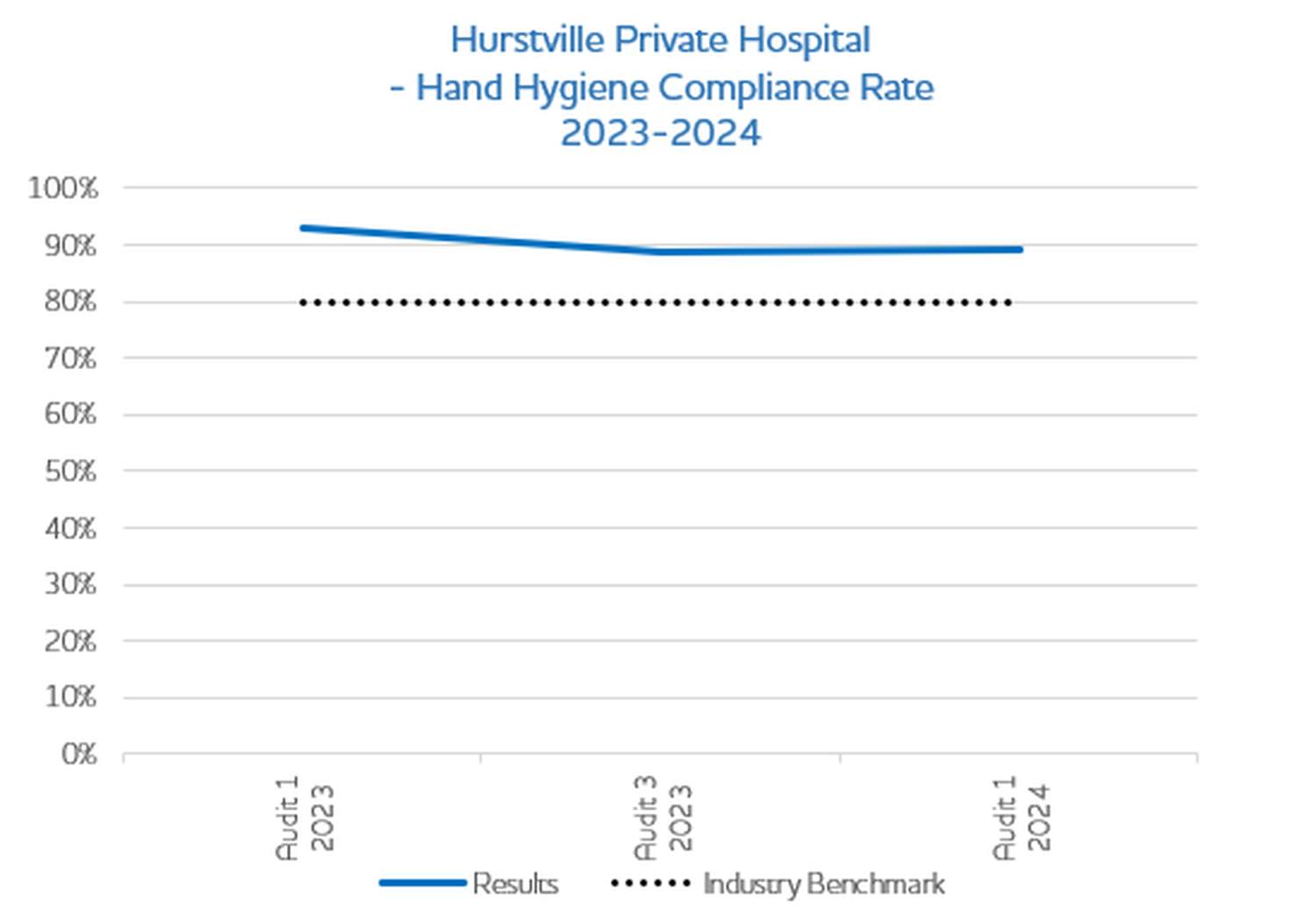
Inpatient Falls resulting in Significant Injury
Hurstville Private Inpatient Fall Rates
A fall in a hospital is when a patient suddenly and unintentionally falls to the ground or lower level. This can happen in a hospital setting for a number of reasons, such as a change in medication, the after affects of an anaesthetic, or just because the surroundings are unfamiliar. Falls can injure patients and affect their recovery and independence.
The graph below shows the number of patients that sustained a fall that caused an injury as a percentage of total patient bed-days (the number of days that all patients spend in hospital). Hurstville Private Hospital achieves a rate far lower (better) than the industry benchmark.
We achieve this through our established Falls Prevention and Management Program and an electronic incident management and reporting system so we can monitor trends and make improvements. A variety of best practice tools and prevention intervention guidelines are utilised to identify those consumers at high risk of having a fall.
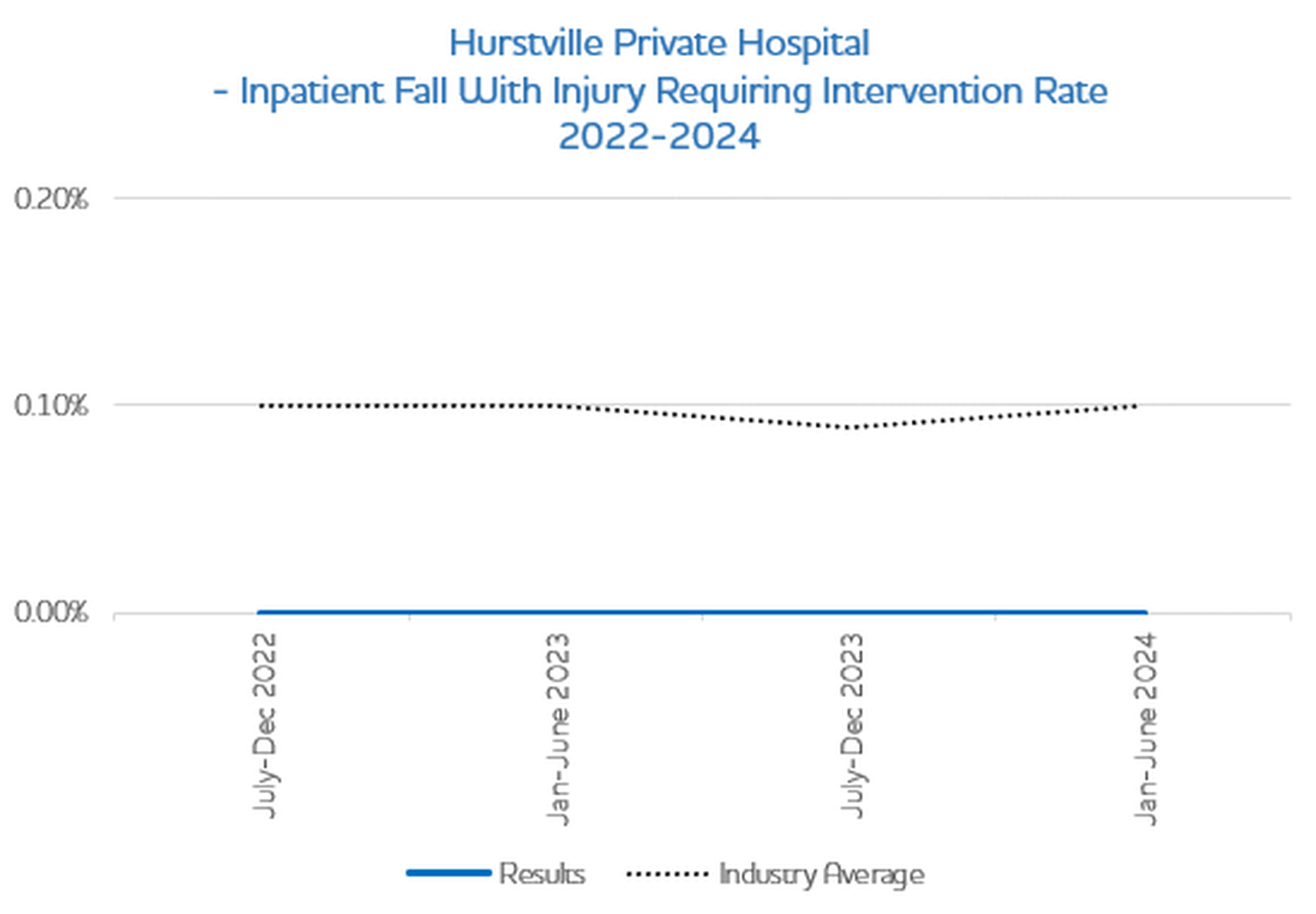
![]()
Unplanned Readmissions
Hurstville Private Hospital Unplanned Readmissions
Monitoring of this information is very important as it provides an indication of the effectiveness of our planning processes for when people are discharged from hospital
The graph below shows the number of patients that were readmitted to hospital within 28 days of discharge from hospital, with a diagnosis related to the same condition as the original admission.
Hurstville Private Hospital's rate is in line with the industry benchmark. This is achieved for example through the presence of dedicated Discharge Planners and other Allied Health staff as part of better discharge planning initiatives, plus preadmission clinics where discharge needs are identified prior to admission.
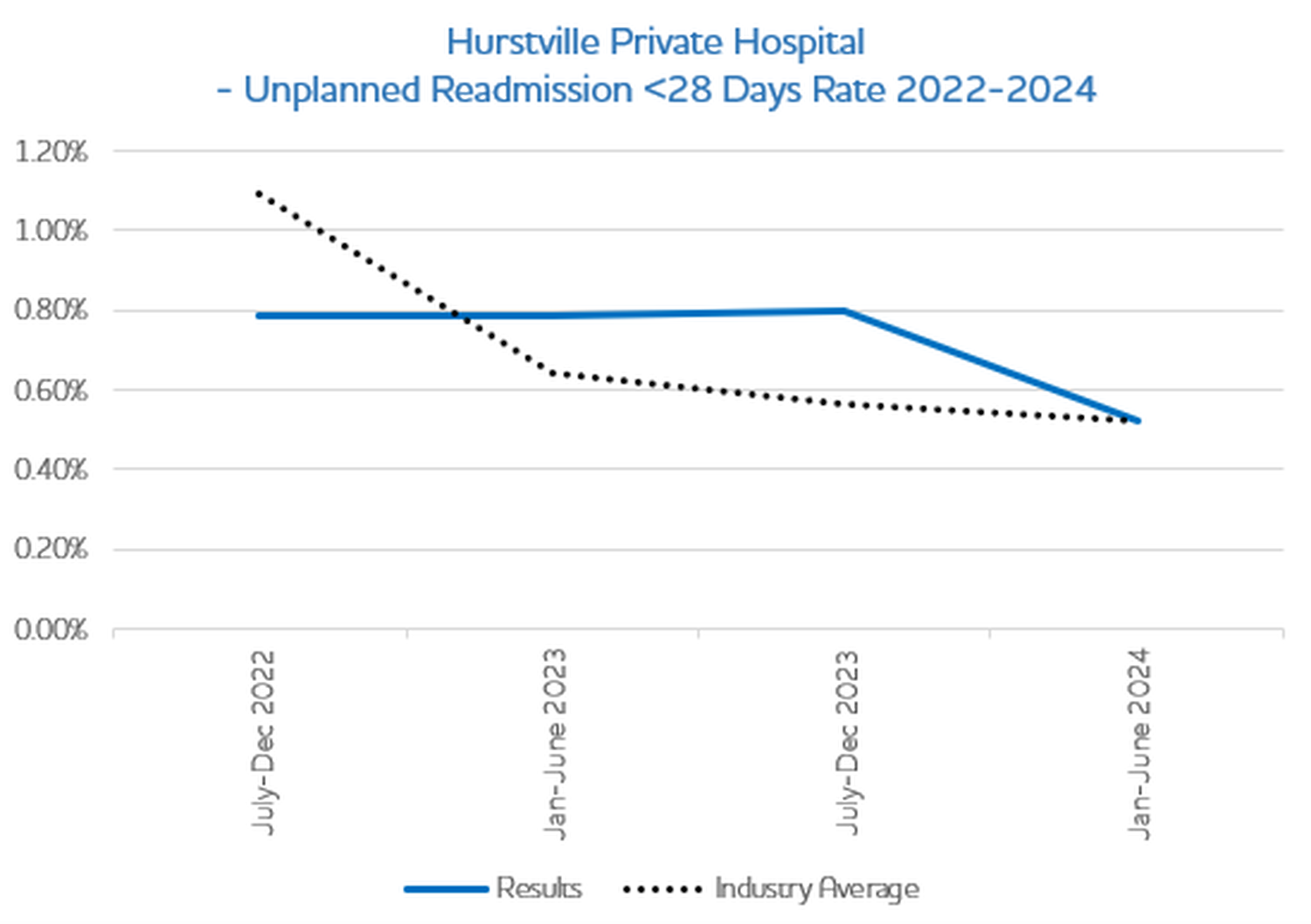
![]()
Unplanned Return to Operating Theatre
Hurstville Private Unplanned Returns
Hurstville Private Hospital doctors undertake surgery in many speciality areas which range from minor procedures to more complex surgery requiring specialised care. We monitor our patient outcomes by comparing any unplanned returns to the operating theatre to other Australian hospitals nationally. The aim is to reduce returns to the operating theatre where possible; however there are many factors which influence this and in some cases it is necessary to have further surgery to save a life.
Unplanned returns to the operating theatre are frequently due to complications, for example to treat bleeding or other problems occurring early after the operation. Some complications following complex surgery are to be expected due to patients’ pre-existing diseases or conditions and the nature of the disease or condition being treated.
Unplanned returns to the operating theatre are reported and clinical outcomes analysed. Recommendations are actioned and monitored to ensure improvements are made where possible
The graph below shows the number of patients that had a surgical procedure or operation and required an unplanned return for further surgery during the same admission. Hurstville Private's rate is lower (better) than the industry benchmark.
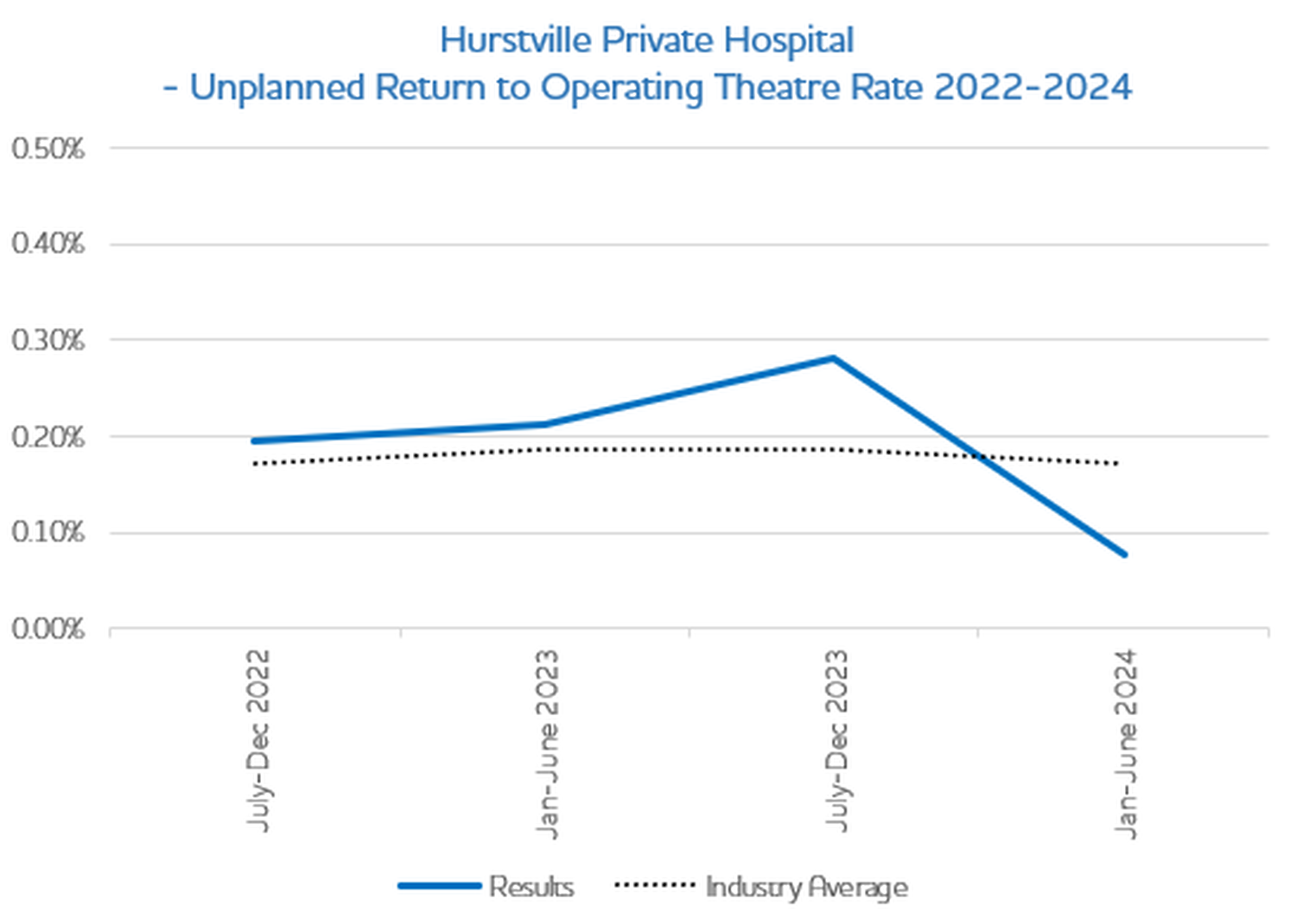
![]()
Pressure Injuries
Hurstville Private Hospital Pressure Injury Rate
A pressure injury is an area of damage to the skin and underlying tissue caused by constant pressure or friction that can sometimes occur when a patient is in one position and unable to easily move for a long period.
Pressure injuries can be prevented. We also help to reduce the likelihood of our patients developing pressure injuries during their hospital stay, by assessing their individual risk and follow individual care plans.
As part of our clinical care, we inspect skin frequently, keep skin dry, ensure patients have access to the best nutrition and hydration, and help and encourage patients to move frequently.
This is very important in maintaining quality care as pressure injuries can cause significant pain and discomfort that can slow a patient’s recovery.
The graph below shows the rate of patients that developed a pressure injury while in hospital. Hurstville Private Hospital rate is lower (better) than the industry benchmark.
We achieve this rate through an established Pressure Injury Prevention Management Program and the reporting and monitoring of every pressure injury for the purposes of identifying areas for improvement.
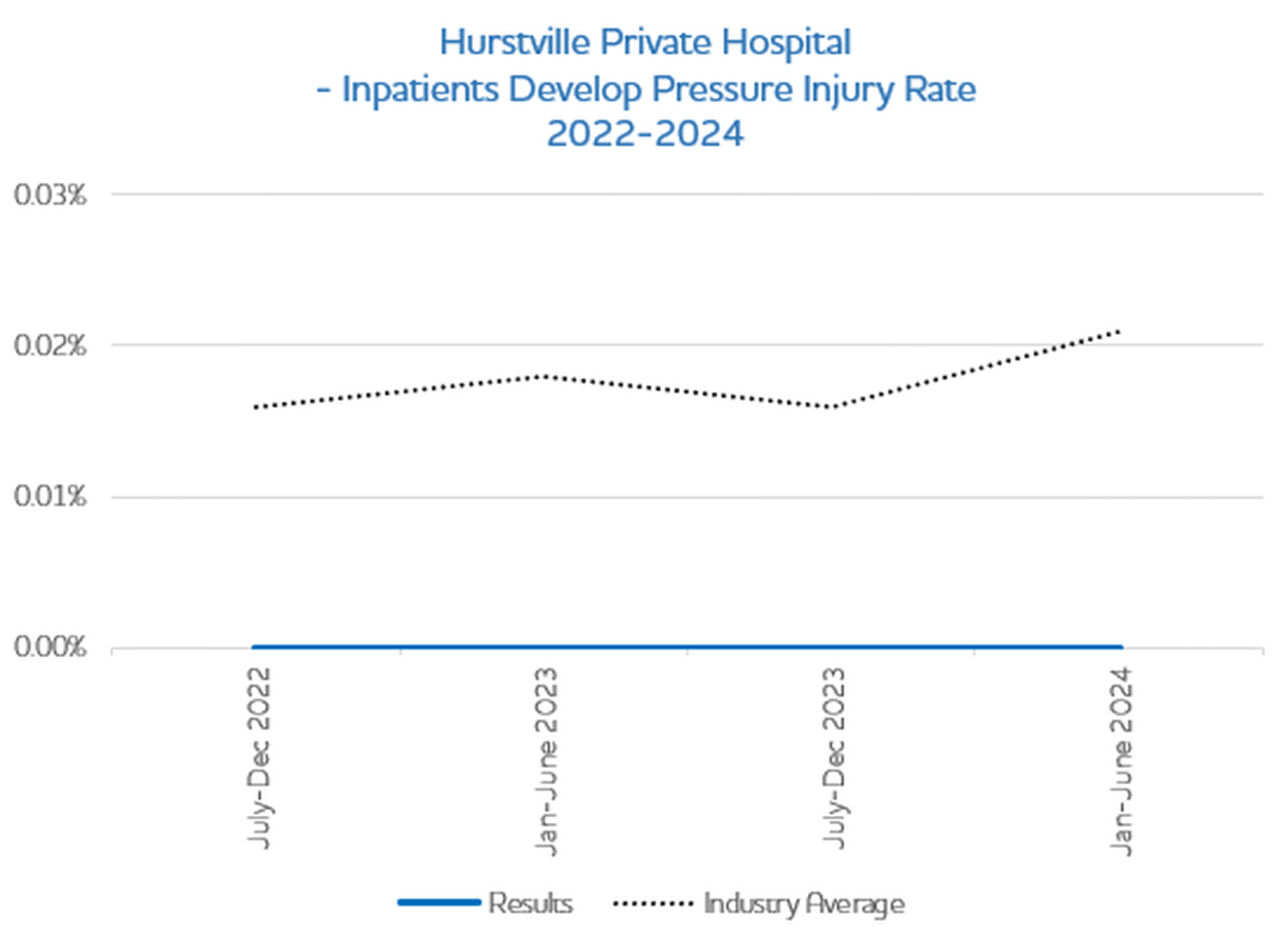
Medication Errors requiring Intervention
Hurstville Private Hospital Medication Error Rate
Medication errors include any errors in the dispensing and administration of medication that require a medical intervention. The graph below shows the number of patients that required an intervention as a consequence of a medication error. Hurstville Private's rate is inline with the industry average.
We are working to reduce this through a number of medication safety initiatives, including the adoption of the National In-Patient Medication Charts endorsed by the Australian Commission on Safety and Quality in Health Care (ACSQHC), and implementing a standardised patient labeling system when administering injectable medicines. Medication incident rates and outcomes are monitored across our hospital to determine if our initiatives are reducing the error rate and level of patient harm.
